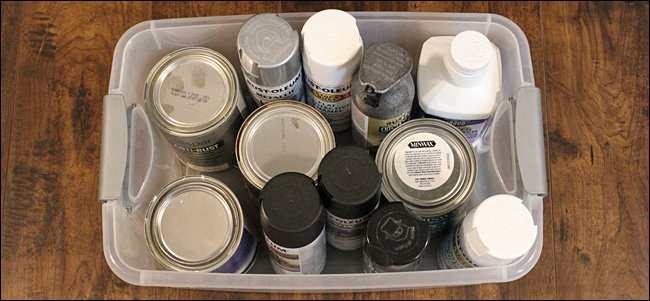
If you’re about to attack the walls in your house with a fresh new coat of paint, all the different choices in the paint aisle at your local hardware store can be pretty overwhelming. Here’s what you need to know about the different kinds of paint and when you should use them.
Oil-Based vs. Water-Based Paint
When it comes down to it, paint is either oil-based or water-based, meaning that the paint’s main ingredient is either water or a type of oil (usually either alkyd or linseed oil).

There are pros and cons to each, but here’s a quick rundown:
Oil-Based Paint
- Drying and curing time takes longer.
- More durable than water-based paint.
- Cleaning paint brushes requires harsh chemicals like paint thinner.
- Often provides a much smoother and better-looking finish.
Water-Based Paint
- Drying and curing takes less time than oil-based paint.
- Isn’t quite as durable.
- Cleanup doesn’t require chemicals—soap and water works great.
- More common than oil-based paint (depending on where you look).
Consider using oil-based paint on surfaces that take frequent beatings and abuse—like exteriors, floors, doors, trim, and furniture. Water-based paint, however, is great for things that won’t see a whole lot of wear and tear—like walls and ceilings.
Water-based paint is also colloquially known as latex paint, even though this type of paint uses acrylic resins or vinyl instead of actual latex. Water-based paint is also the most common type of paint—usually around 75% of paint available at most hardware or paint stores is water-based, although it depends where you shop.
Primer

Primer is an important component to the painting process, but you should understand that primer isn’t actually “paint.” It’s very similar in that it has the same consistency as paint and is applied the same way, but you would never use it as a final coat on anything. Applying a primer before applying the actual paint allows the primer to act as an…
The post The Different Types of Paint (and When to Use Them) appeared first on FeedBox.